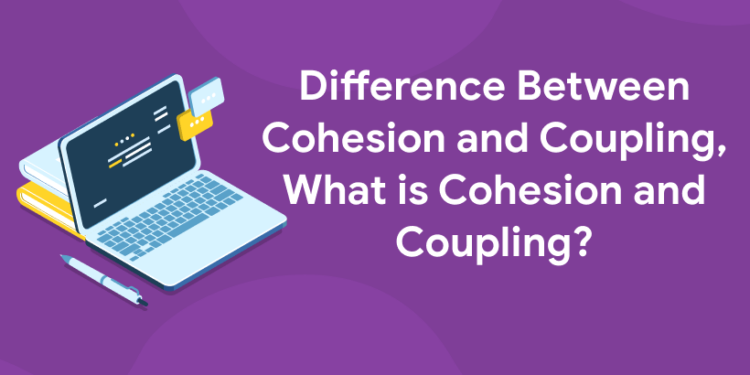Table of Contents
What is Cohesion and Coupling?
Two crucial terms in software engineering are coupling and cohesion. They both have to do with how various system components are connected to one another. As a result, there seems to be some overlap between the two. Because it would take a lot of time to examine and recheck the system modifications if there were no records of the coupling between the modules, developers must maintain track of this information. In order to adequately design the system, they also need to know if high or low cohesion/coupling is desirable. It is crucial that they comprehend the fundamental differences between the two as a result. Let’s first look closely at Cohesion and Coupling together with their many forms before delving deeply into the distinctions.
What is Cohesion?
The degree of functional connectivity between the components of a given module is known as cohesion. Cohesion is essentially a metric for assessing a module’s functional strength. For instance, systems with high cohesion will include components that are tightly linked to one another, such as instructions, groups of instructions, the description of data, etc. High cohesiveness is recommended since it aids in sharpening concentration on a certain job. There are many different kinds of cohesiveness; the most common ones include:
1. Functional cohesion
In this kind of cohesiveness, a module’s components cooperate to accomplish a single objective. The components cooperate with one another in order to maintain concentration on the given job. They only engage in activities that are required for the task at hand.
As an illustration, consider how people are assigned seats on airplanes.
2. Sequential cohesion
Our work is much facilitated by maintaining a sequence of actions, correct? Yes, sequential cohesion does it. The outcome of one activity serves as an input to another in this kind of coherence. The well-defined sequence makes maintenance simple and offers good coupling.
Example: Raw records can be formatted using sequential cohesion.
3. Logical Cohesion
A sort of cohesiveness called logical cohesion occurs when all the components of a module carry out identical tasks, including managing errors.
As an illustration, consider a system that has a number of scan functions for scanning performance reports.
Learn to code from industry experts! Enroll here
What is Coupling?
The degree to which the two modules are dependent on one another is referred to as coupling. It gauges how strongly modules are connected to one another. For instance, modules in loosely connected systems are less dependent on one another and are better able to concentrate on the tasks that are allocated to them. Several common forms of coupling include:
1. No direct coupling
No direct link exists between the modules in no direct coupling, as the name would imply. This type of coupling is preferred since the modules may concentrate on their duties without becoming interdependent.
2. Data coupling
This kind of coupling creates interdependency between the interacting modules by passing one or more data items back and forth. Integer or float data types may be used in the shared data.
3. Content coupling
In this type of coupling, the interacting modules share code with each other. Basically, here one module depends on the implementation of the other module.
4. Control coupling
Control Coupling is a type of coupling which occurs when one function controls the flow of another function.
Example:
bool check(int a){
if (a%2==0)
return false;
else
return true;
}
void demo(){
// Here, we call hello() by passing a value that controls its flow:
hello(4);
}
Difference between Cohesion and Coupling
Cohesion and coupling vary primarily in that cohesion deals with the connections between the components of a single module. Coupling, however, is concerned with the dependency on software units.
| Cohesion | Coupling |
| Cohesion is defined as the degree of relationship between elements of the same module. | Coupling is defined as the degree of interdependence between the modules. |
| It’s an intra-module approach | It’s an inter-module approach |
| High cohesion is preferred due to improved focus on a particular task. | Low Coupling is preferred as it results in less dependency between the modules. |
| Cohesion is used to indicate a module’s relative functional strength. | Coupling is used to indicate the relative independence among the modules. |
| In cohesion, the module focuses on a particular task. | In coupling, a particular module is connected to other modules. |
| Cohesion is also known by the name ‘Intra- module Binding’. | Coupling is also known by the name ‘Inter-module binding’. |
Both terms are helpful in the software design process. High cohesiveness increases a module’s functional strength, whilst low coupling might ensure less dependence on other modules. Developers may enhance the design of software engineering by keeping this crucial factor in mind when they are aware of this essential component.











